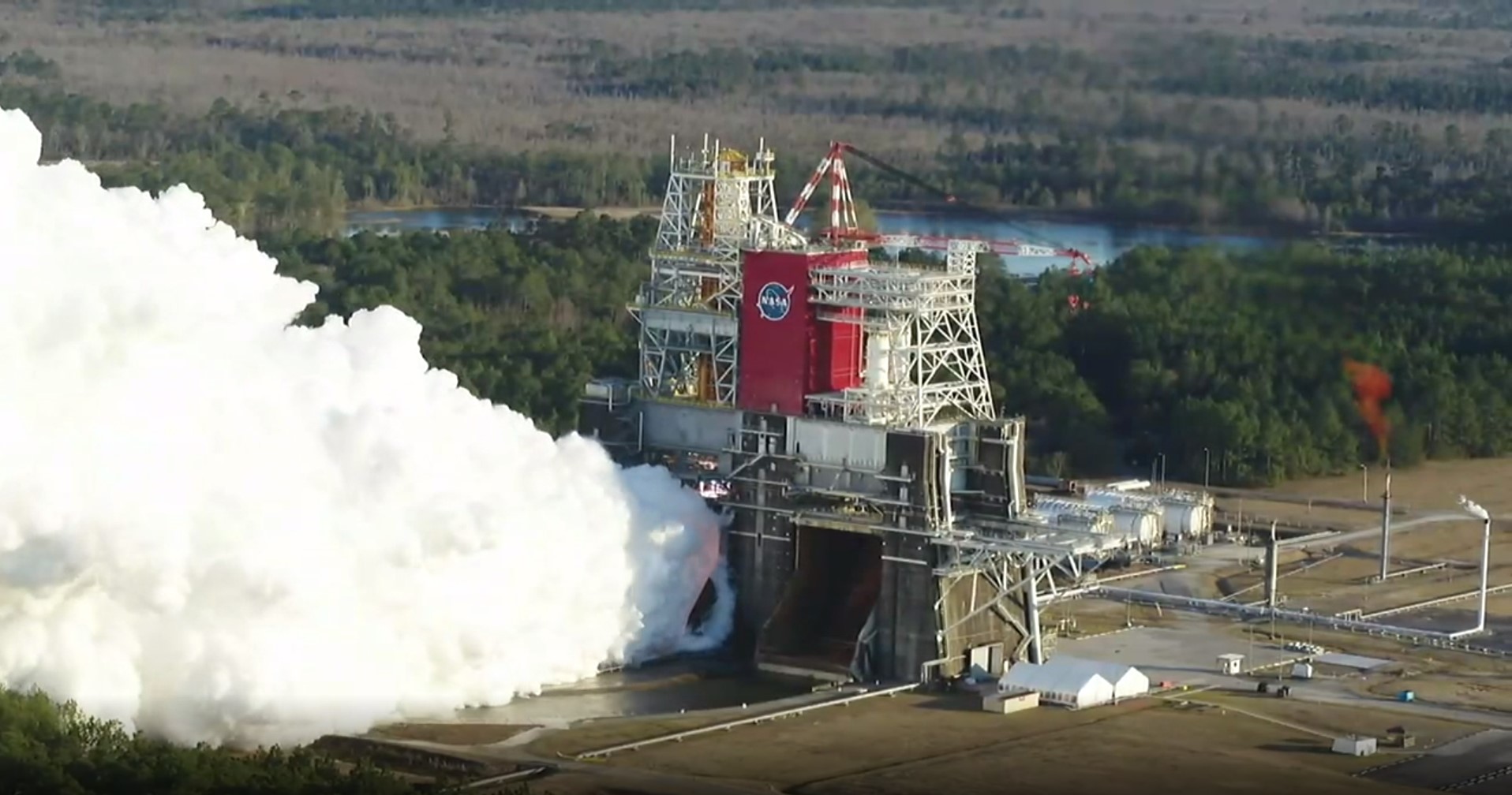
For SpaceUpClose.com & RocketSTEM
CAPE CANAVERAL, FL – After completing repairs to a balky liquid oxygen pre-valve NASA announced that the agency is targeting Thursday, March 18 to perform a second Green Run hot fire test on the Space Launch System (SLS) mega Moon rocket’s core stage planned for the Artemis-1 moon launch.
The second test is a direct result of the premature end to the initial hot fire test conducted on Jan. 16 at NASA’s Stennis Space Center in Mississippi after barely 1 minute of the RS-25 core stage engines firing out of 8 minutes scheduled.
The 2nd Green Run hot fire test of the 1st SLS core stage will be conducted during a two-hour window that opens at 3 p.m. EDT, March 18 on the B-2 test stand at NASA Stennis.
Engineers plan to start initial Green Run preparations on March 16 by powering up the core stage in anticipation of the March 18 hot fire.
“NASA is targeting a two-hour test window that opens at 3 p.m. EDT Thursday, March 18, for the second hot fire test of the core stage for the agency’s Space Launch System (SLS) rocket at NASA’s Stennis Space Center near Bay St. Louis, Mississippi,” NASA said in a March 15 update.
“The Green Run is a comprehensive assessment of the rocket’s core stage prior to launching Artemis missions.”
A successful completion to the long awaited and absolutely critical Green Run hot fire test of all RS-25 four core stage engines simultaneously firing is essential for NASA to move forward with confidence with Project Artemis missions aimed at returning US astronauts to the moon and landing the first woman and next man as soon as late 2024.
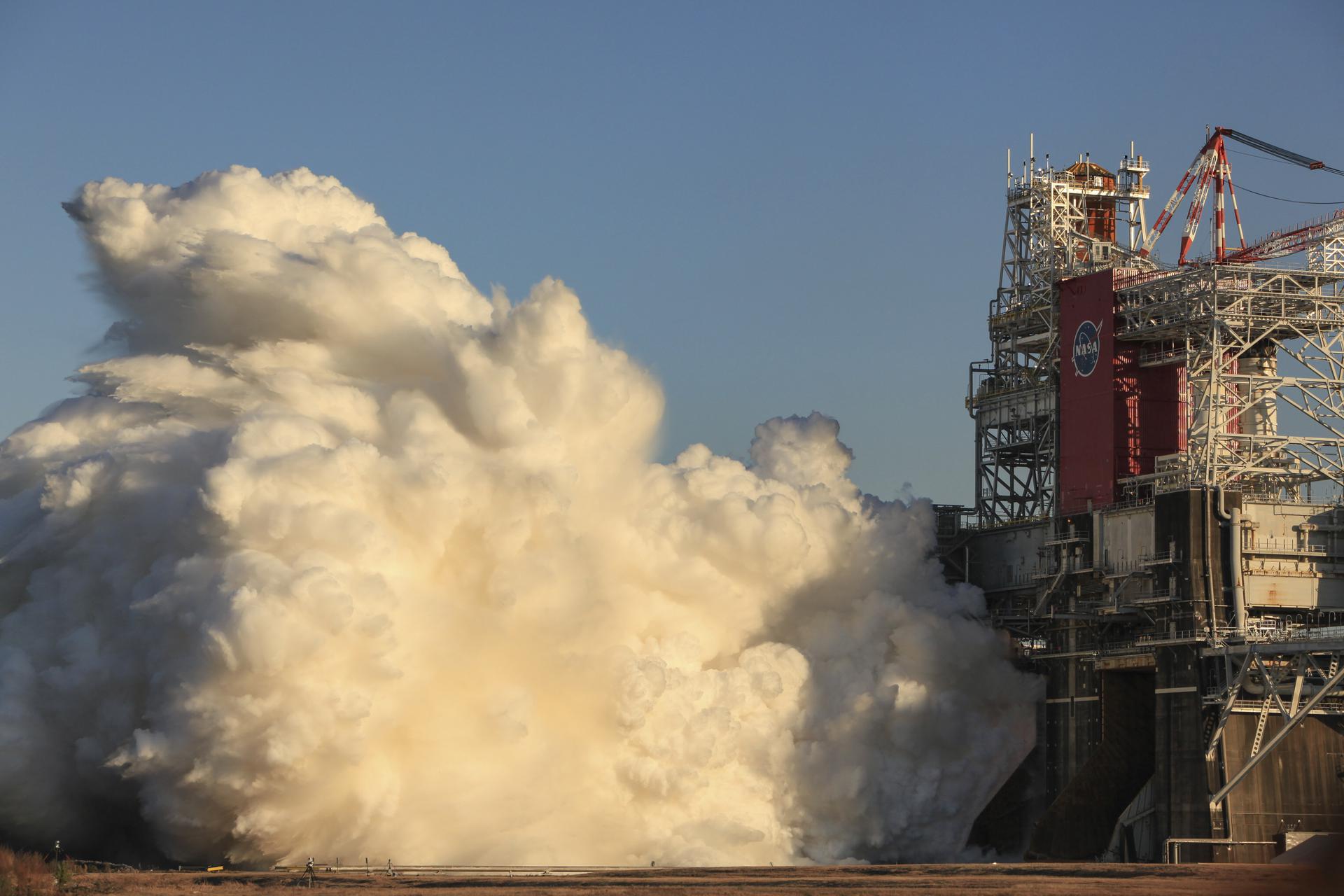
The launch of Artemis 1 will now almost certainly slip into 2022 vs. the hoped for target date of NET late November 2021 because the core stage shipment to the launch site at NASA’s Kennedy Space Center in Florida will now ship at well over a month later than previously planned.
On test day, engineers will power up all the core stage systems, load more than 700,000 gallons of cryogenic, or supercold, propellant into the tanks, and fire the rocket’s four RS-25 engines at the same time to simulate the stage’s operation during launch, generating 1.6 million pounds of thrust, says NASA.
It’s that time again 🔥
The second Green Run hot fire test of the @NASA_SLS core stage is targeted for Thurs., March 18. The two-hour test window opens at 3pm ET.
Check @NASA for updates on the operations as we approach this #Artemis I milestone: https://t.co/mfC1dWwejf pic.twitter.com/sBoPDUY2hc
— NASA Artemis (@NASAArtemis) March 15, 2021
You can watch the Green Run test live on NASA TV starting about 30 minutes before the test time which will be refined as the day proceeds depending on how long it takes to get the stage loaded and ready.
“The agency plans to begin live coverage on NASA Television, the agency’s website, and the NASA app approximately 30 minutes before the hot fire.
The team will refine the timeline as it proceeds through operations. NASA will provide updates on the operations and the target hot fire time at @NASA and the Artemis blog.”
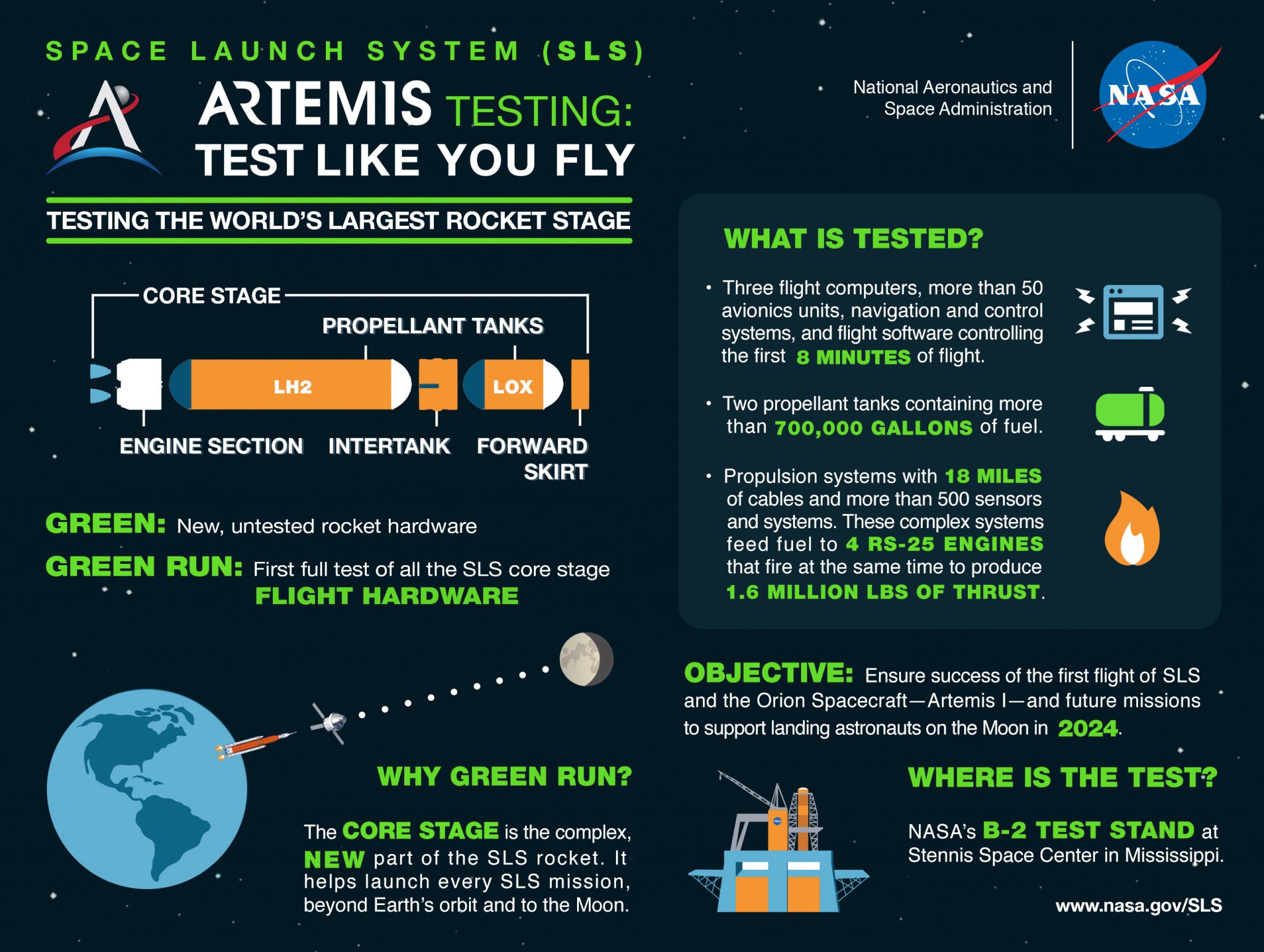
The 2nd Green Run hot fire test is being conducted because the first test conducted at 5:27 p.m. ET on Jan. 16 in the B-2 test stand at NASA’s Stennis Space Center only lasted about 67 seconds vs. the planned full duration test run of about eight minutes or approximately 485 seconds – the time it takes to achieve orbit.
NASA and prime contractor Boeing officials determined that the premature engine shutdown was “triggered by test parameters that were intentionally conservative to ensure the safety of the core stage during the test.”
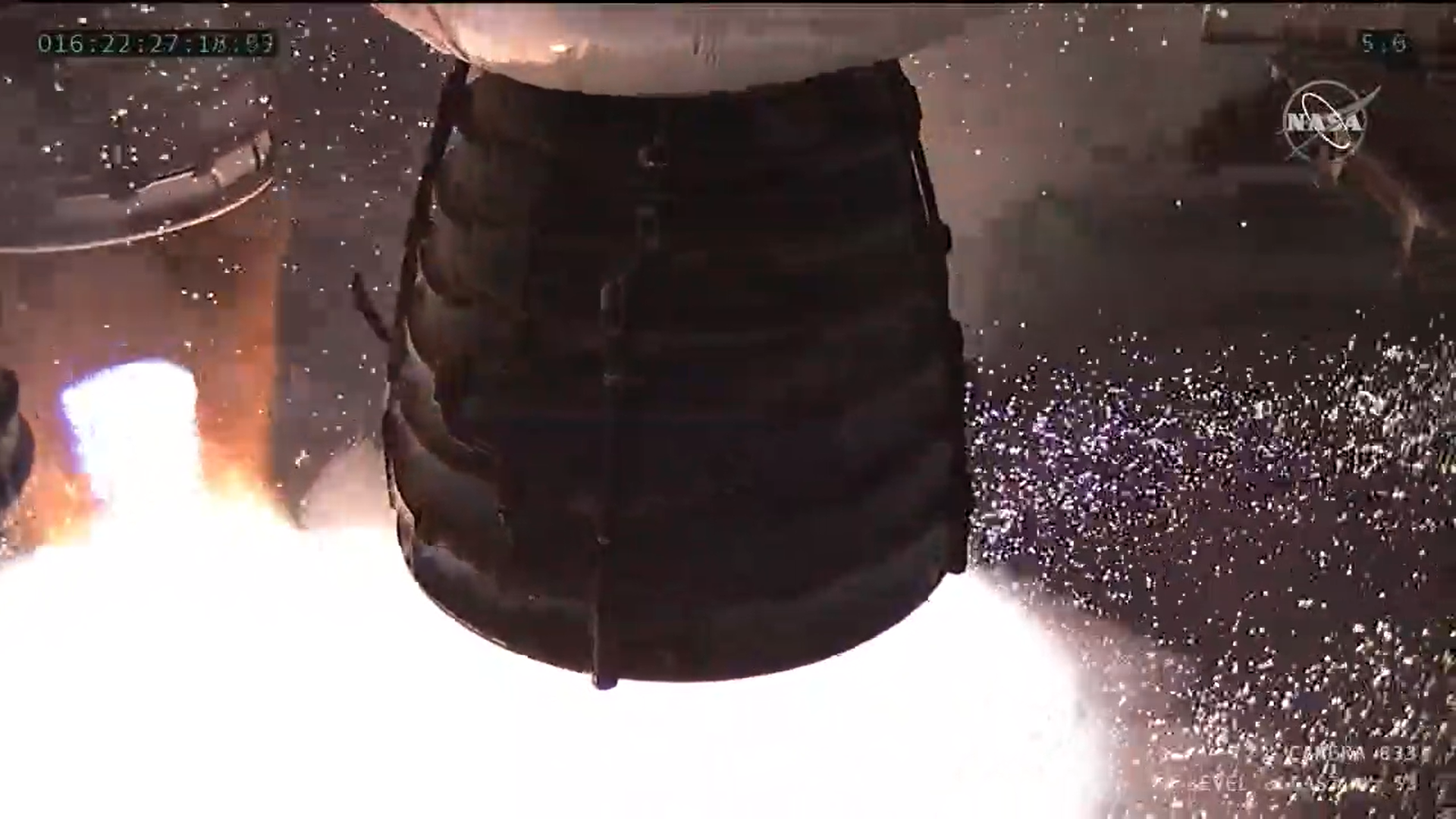
The Green Run hot fire test was planned to run full duration and simultaneously fire the four RS-25 engines on the SLS core stage for about 8 minutes or approximately 485 seconds on the B-2 test stand at Stennis and generate about 1.6 million pounds of thrust – fueled by cryogenic, or supercold, liquid oxygen (LOX) and liquid hydrogen (LH2) propellant fed into the fuel tanks from six propellant barges.
Prior to the first test NASA and Boeing officials had said they needed at least for the test to run a minimum of about 250 seconds to obtain sufficient data to proceed ahead with the Artemis 1 mission.
Inspections of the core stage after the Jan 16 hot fire test reveled it to be “in excellent condition” with no significant repairs required
The NASA Boeing team is still planning for a full duration test and seeking a minimum od about 4 minutes run time to satisfy all Green Run objectives to enable going forward with the Artemis 1 mission.
Engineers have relaxed some of the ‘conservative“ parameters to better ensure a full test run
Then another delay in February was caused by the discovery during checkouts that “data indicated the valve (a type of valve called a pre-valve) was not working properly. The valve is part of the core stage’s main propulsion system and is opened at the beginning of the test and closed if necessary to stop the flow of liquid oxygen from the core stage propellant tank to the respective RS-25 engine during the hot fire.”
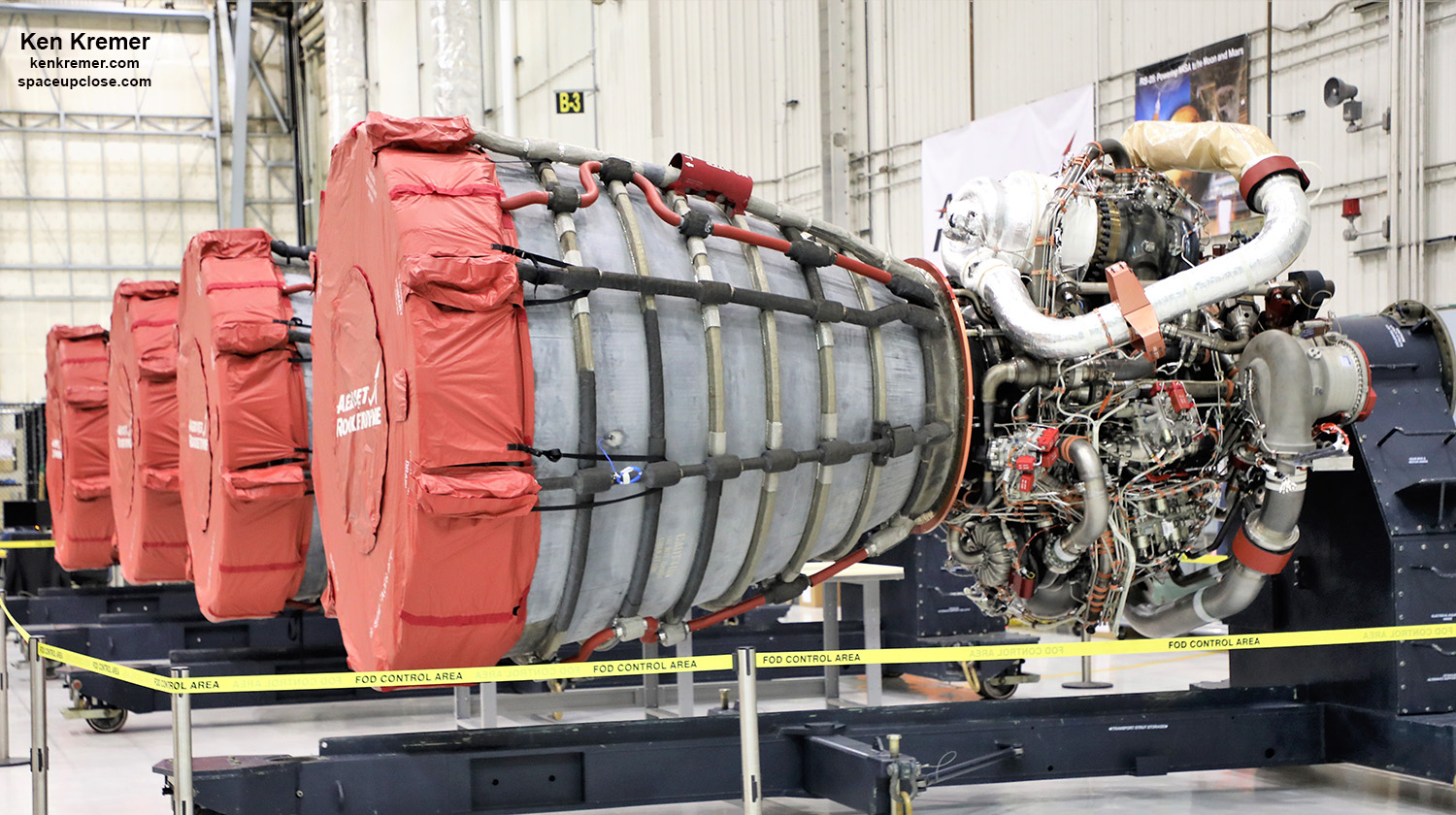
Engineers then successfully repaired the liquid oxygen pre-valve on the Space Launch System rocket’s core stage and subsequent checks confirmed the valve to be operating properly.
Meanwhile teams at KSC have been stacking the Artemis 1 SLS SRB boosters and have finished assembly of the Orion crew vehicle.
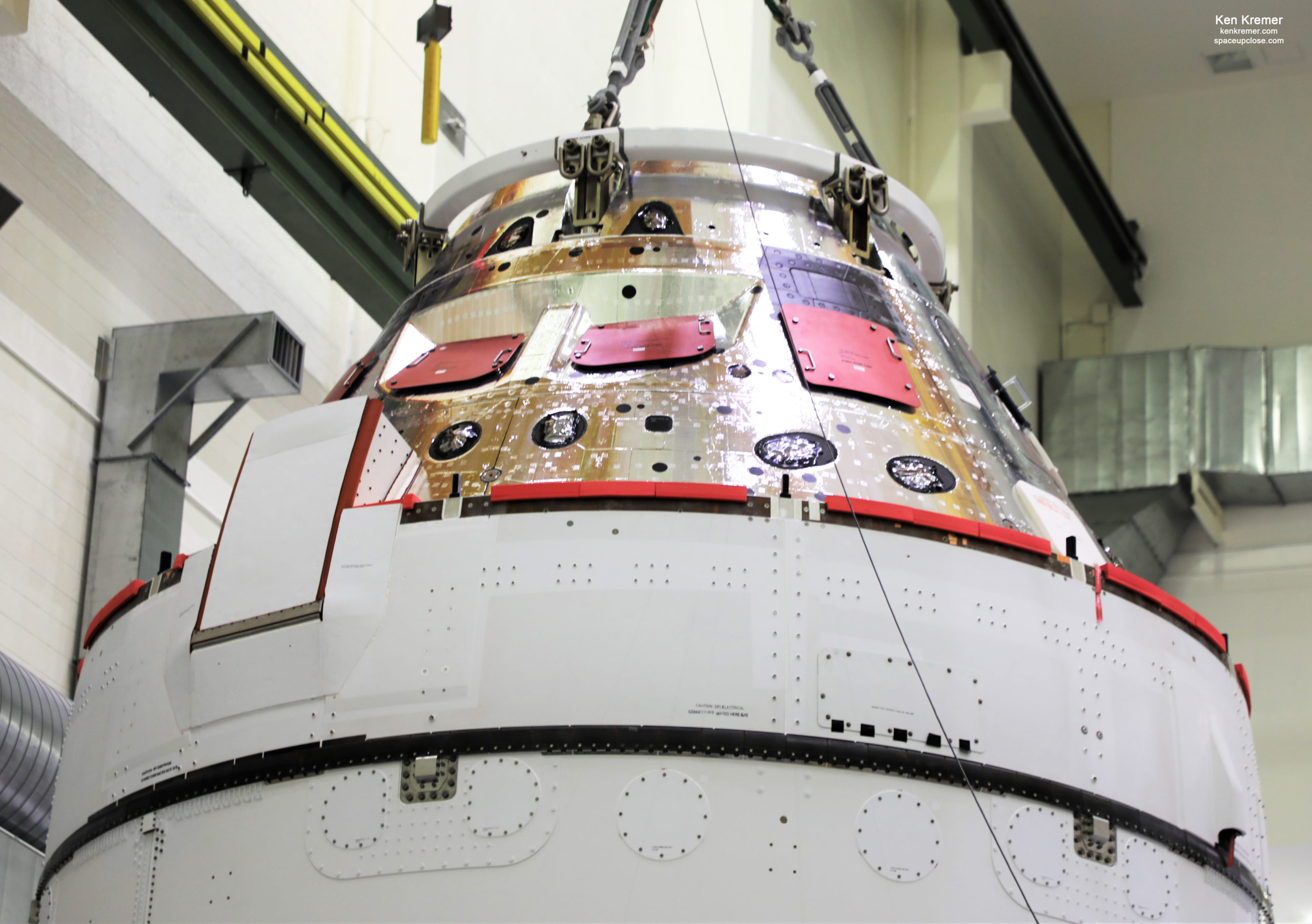
The SLS core stage for #Artemis I will arrive to @NASAKennedy following the Green Run hot fire test. A 325-ton crane will be used to stack the core stage on the mobile launcher to join it with the twin solid rocket boosters.
MORE ON LAUNCH PREP >> https://t.co/9SzQaBOROO pic.twitter.com/MlO663y7QE
— NASA_SLS (@NASA_SLS) March 16, 2021
My pre-test commentary about the Green Run hot fire was featured on WFTV ABC 9 Orlando TV News on March 17/18
Watch Ken’s continuing reports about Artemis and NASA missions, SLS, Orion, SpaceX, Starlink, Commercial Crew and Starliner and Crew Dragon and onsite for live reporting of upcoming and recent SpaceX and ULA launches including Crew 1 & 2, Demo-2, ISS, X-37B, Solar Orbiter, Mars 2020 Perseverance and Curiosity rovers, NRO spysats and national security missions and more at the Kennedy Space Center and Cape Canaveral Space Force Station.
Stay tuned here for Ken’s continuing Earth and Planetary science and human spaceflight news: www.kenkremer.com –www.spaceupclose.com – twitter @ken_kremer – email: ken at kenkremer.com
Dr. Kremer is a research scientist and journalist based in the KSC area, active in outreach and interviewed regularly on TV and radio about space topics.
………….
Ken’s photos are for sale and he is available for lectures and outreach events
Please consider supporting Ken’s work by donating at Patreon:
https://www.patreon.com/kenkremer
x



